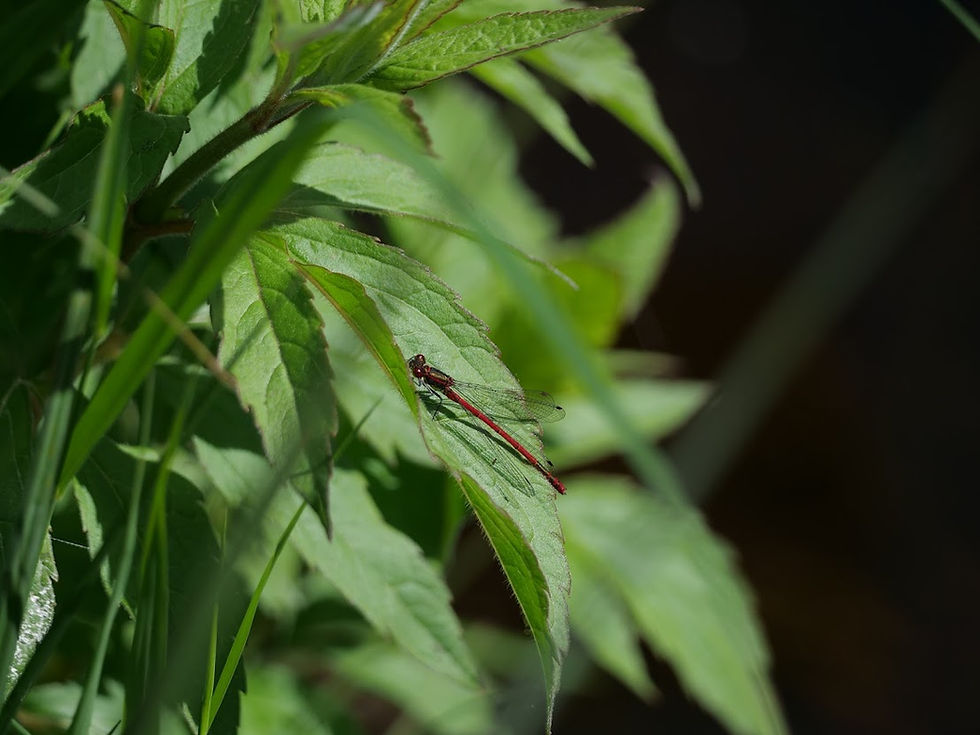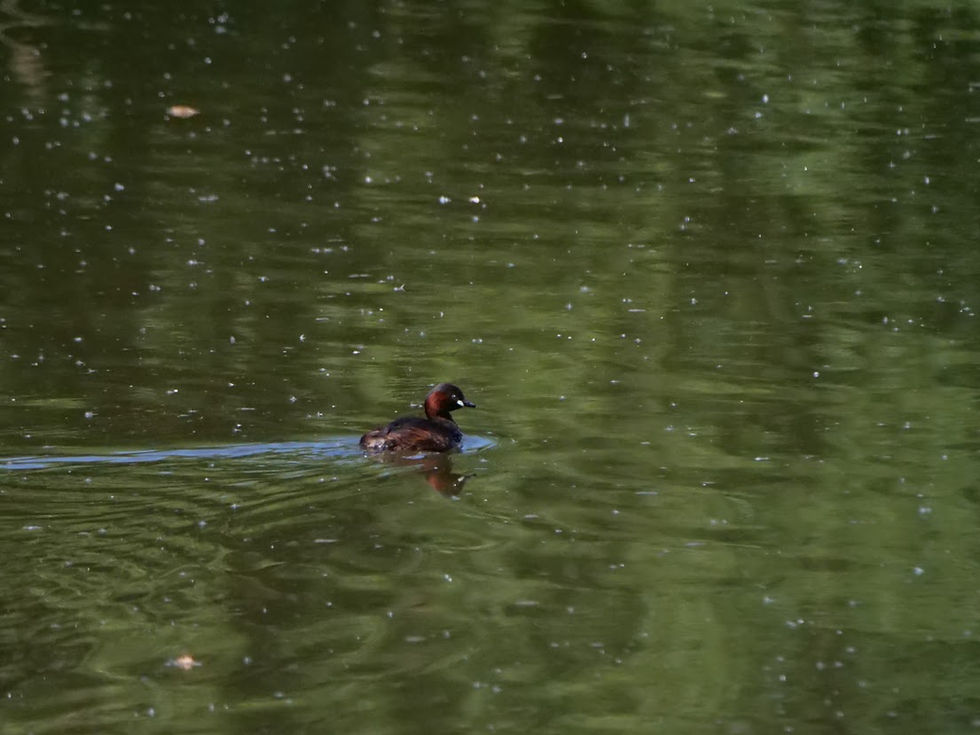RSPB Rye Meads & Amwell (Herts & Middlesex Wildlife Trust) Nature Reserves 13.05.22
- Sim Elliott

- May 17, 2022
- 3 min read
RSPB Rye Meads and Amwell Nature Reserves are located in the northern part Lea Valley (in Herefordshire)

Rye Meads is an RSPB-managed reserve which includes reedbeds, open water and a scrape. ... a 58.5 hectare biological Site of Special Scientific Interest (SSSI) in Rye House, Hertfordshire. It is also part of the Lea Valley RAMSAR site (a group of internationally important wetland sites) and a Special Protection Area. Rye Meads Nature Reserve, Hertfordshire - The RSPB
Once a designated gravel pit, today a haven bustling with wildlife all year round. Amwell Nature Reserve near Ware is one of the most important places for wildlife in the county and is well-used and enjoyed by the local community. It hosts a mosaic of habitats including reedbeds, grassland and woodland, although Great Hardmead Lake is arguably the most striking feature. The reserve forms part of the Lee Valley, which connects the site with other nature reserves and habitats along the River Lee, providing a wildlife corridor stretching from Hertford to the Thames, creating a Living Landscape. Amwell | Herts and Middlesex Wildlife Trust (hertswildlifetrust.org.uk)
Both of these reserves were new to me. Sometimes when I go to a nature reserve, I have a focus, e.g. to see Butterflies, or waders, or woodland birds, but I had no focus in mind for this day out. I took the train to Rye House railway station (from London Liverpool Street Station, a 36 minute trip, trains every 30 minutes, I took the train from Brighton to London Bridges, and walked to Liverpool Street from London Bridge). (A fare tip: if you are travelling from Brighton, a Zone 6 Travel Card will you get you as far as Enfield Lock on the train to Rye House, so you just need to but a return from Enfield Lock to Rue House; the costs of a Travel Card and a return from Enfield Lock to Rye House is much cheaper than a return to Rye House from Brighton, and you don't need to get off the train at Enfield Lock. It is a short walk to the entrance of RSPB Rye Meads.
These photos are presented in chronological order, not by species or habitat; to give a feel of my journey around these locations. I photographed what captured my attention, butterflies, bees (bumble and solitary), dragonflies/damselflies, plants and landscapes, in the moment.
Rye House Gatehouse

Gatehouse to Rye House (demolished), lower part used as a museum. C15 for Sir Andrew Ogard a naturalised Dane (license to crenelate 1443) on this moated site beside the river. 1683 scene of the Rye House Plot to murder Charles II. Rebuilt except gatehouse at end of C17 (RCHM Typescript). Said to have been used as the parish Workhouse before 1834. Site made into a pleasure garden for London trippers c1868 by Henry Teale (1806 - 76). Site
cleared and gatehouse restored recently for Lee Valley Park. Rye House Gatehouse, Stanstead Abbots, Hertfordshire (britishlistedbuildings.co.uk)





Trail Guide

Map from untitled (rspb.org.uk)
Inside the Lapwing Hide



Large Red Damselfly


Ragged Robin


Moorhen parent and chicks





Another Large Red Damselfly

The pond where this damselfly was seen.

A hoverfly (species unknown)



Another Large Red Damselfly

Marsh Marigold

To the Draper Hide

From the Draper Hide


Black-Headed Gulls, Gadwalls and Coots

Common Tern

Common Tern and Gadwalls


Common Tern

Red-Crested Pochard


Black-Headed Gulls and a Lapwing

Woodpigeon

Black-Headed Gulls, Red-Crested Pochards and Pochards

Pochard


Speckled Wood

Cormorant


From the Ashby Hide
Male Reed Bunting


Redd beds
Gadwall


Coot nest




Carpet Moth

Canada Goose and hidden gosling!

Hoverfly and Dog Rose

Holly Blue Butterfly


Possibly a Cuckoo/possibly a raptor/possibly a Crow!



Gadwall Hide

Tufted Duck

Little Grebe


Little Tern

Lesser Black-Backed Gull


Male Banded Demoiselle, Calopteryx splendens, Large metallic damselfly with fluttering, butterfly-like wings. Male: metallic blue body with broad dark blue-black spots across outer parts of wings. Can be confused with The Beautiful Demoiselle; "the only other British damselfly with coloured wings but the males have fully coloured wings and the females have brown-tinged wings. Banded Demoiselle - British Dragonfly Society (british-dragonflies.org.uk)


Red Admiral


Green-Veined White on Aconite

Peacock on reed


From the Kingfisher Hide
Coot chick




Gadwall



Common Blue

Moorehen

Along the Tow Path of the Rover Lea Navigation at St Margaret's
Canada Goode and goslings




Black-Headed Gull

Common Tern



Amwell Nature Reserve

On the Great Hardmead Lake
Lapwing and Common Tern

Tufted Ducks with a Little Ringed Plover behind, and Black-Headed Gulls


Moorhen, Mallards, Black-Headed Gulls and Ringed Plover


Tufted Ducks and Black-Headed Gulls

Another Male Banded Demoiselle,


Hoverfly


Female Blackbird

Male Blackbird

Great Tit


From the James Hide

From the White Hide
Lapwing

Black-Headed Gulls, Gadwall and Ringed Plover

Tufted Ducks, Gadwall and Ringed Plover

Black-Headed Gulls

Ringed Plover in flight, Black-Headed Gulls, Tufted Duck, Gadwall and Comorant

Tufted Ducks, Gadwall and Dunlin (summer plumage)

Ringed Plover

Mallards

Cormorants and Mute Swan

Black-Winged Gull and Lapwing

Female Tufted Duck and Lapwing

Rabbit

From the path
Common Tern, Black -Headed Gulls and Lapwing

Common Tern, Lapwing and Black-Headed Gull


Common Sandpiper and Herring Gull

Black-Headed Gull, Common Tern and Common Sandpiper


Black-Headed Gull and Common Sandpiper

Black-Headed Gull, Common Tern and Common Sandpiper

Large White

Mayfly

Robin

Walking back to St Catherine's station

Mallard

Canada Goode and goslings






Comments